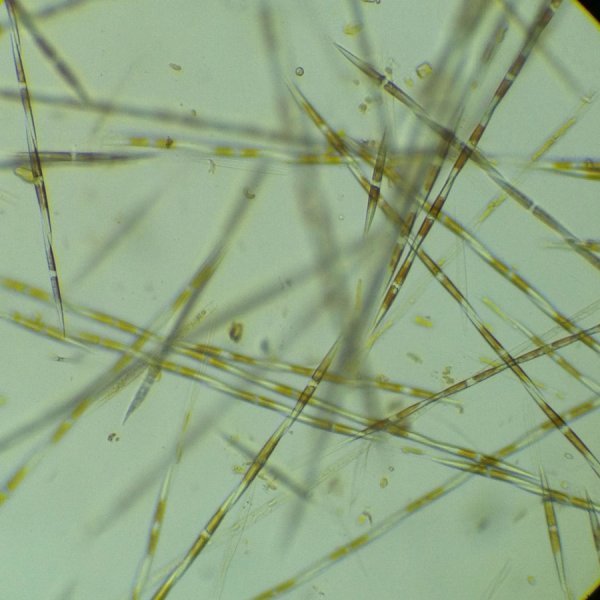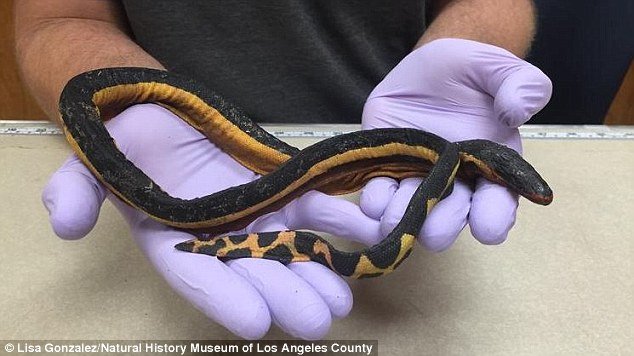
© Alyssa GelleneCells of the diatom Pseudo-nitzschia, a type of single-celled algae, produce the neurotoxin domoic acid under certain conditions. This image is from a water sample collected in Monterey Bay in 2015.
Researchers monitoring the unprecedented bloom of toxic algae along the west coast of North America in 2015 found record levels of the algal toxin domoic acid in samples from a wide range of marine organisms.
The toxin was also detected for the first time in the muscle tissue or filet of several commercial fish species.Investigations led by scientists at the University of California, Santa Cruz, help explain the extraordinary duration and intensity of the 2015 domoic acid event, the spread of the toxin through the marine food web, and its persistence in Dungeness crab months after the algal bloom disappeared from coastal waters. Ocean scientist Raphael Kudela, the Lynn Professor of Ocean Health at UC Santa Cruz, will present the latest research findings at the American Geophysical Union (AGU) Fall Meeting in San Francisco on Friday, Dec. 18, 2015.
Domoic acid is a potent neurotoxin produced by a type of microscopic algae called
Pseudo-nitzschia that occurs naturally in coastal waters. Blooms of the toxic algae along the California coast typically occur in the spring and fall and last just a few weeks.
This year, however, unusual oceanographic conditions (unrelated to El Niño) led to the largest and longest-lasting bloom ever recorded."The
duration of the bloom and the intensity of the toxicity were unprecedented, and that led to record levels of the toxin in species such as anchovies, razor clams, and crabs," Kudela said. "We also saw the toxin in organisms and parts of organisms where we thought it was not supposed to be, like the filets of fish."


Comment: Toxic algae bloom may be largest ever off West Coast